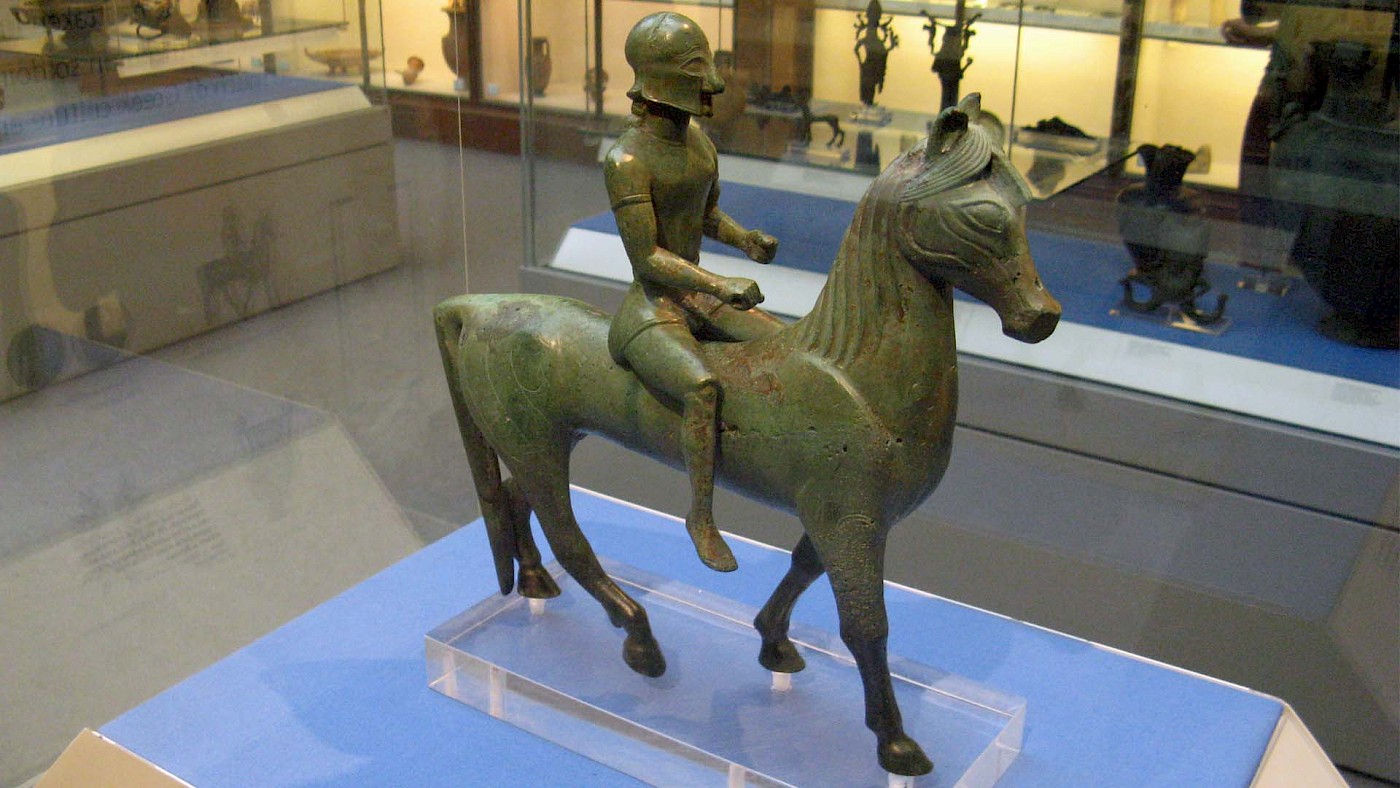One of my favourite objects in the British Museum is a small, bronze statuette of a warrior on horseback. The museum’s description doesn’t do it justice, but I will quote it here nonetheless:
Bronze statuette of a warrior on horseback. He once held a spear and a shield, and his helmet was topped by a crest which ran across sideways.
The helmet is of so-called Corinthian type, which was hammered out of a single sheet of bronze and left only slits for the eyes and mouth. He doesn’t appear to wear any other kind of armour: he wears a simple chiton or tunic, with a belt at his waste, and his legs are bare rather than equipped with greaves.
The horse itself is stylized in typical fashion: the statuette dates from ca. 550 BC and shows many features characteristic of Greek Archaic art, including the way that the manes are executed, the large almond-shaped eyes, and the engraved decorations on the horse’s body.
The warrior himself is a good example of a so-called hippobatas (“horse-fighter”), a term encountered on a roughly contemporary Corinthian aryballos to denote a mounted warrior equipped with helmet, spear and shield. In essence, these hippobatai were what we might term, for want of a better word, “mounted hoplites”.
In all likelihood, these men would ride to battle and jump off to fight on foot, with a (mounted) assistant or “squire” taking the reigns of their horse and escorting it to safety. The squire would then watch from the sidelines and return to his master when beckoned. If you’re interested in these figures, I wrote an article on this subject that was published in BABesch back in 2007. Feel free to download it and give it a read.
In any event, the description in the British Museum notes that the statuette was made in Taranto in around 550 BC, but found in Grumentum. While Taranto was a city founded by Greeks, Grumentum was a native settlement located in Lucania.
The horseman may have found its way among the Lucanians through trade or as part of an exchange of gifts of some sort. I don’t believe the exact provenance of the statuette is known; a mention in the catalogue The Western Greeks (1996, p. 543) suggests that it may have originally been dedicated at a sanctuary.
